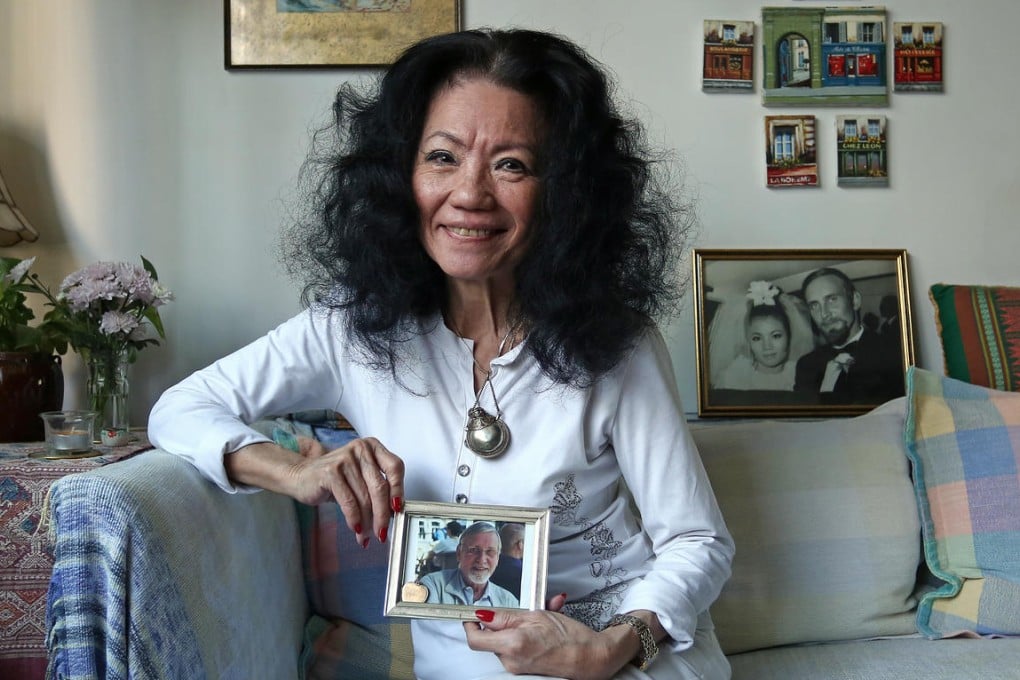Annie van Es, widow of fall of Saigon photographer talks about life in the war zone
The widow of Dutch photographer Hubert van Es tells Jo Baker about her husband's iconic picture from the fall of Saigon and the peaks and troughs of living in a war zone

YI wouldn't call Hugh (Hubert van Es) fearless but when he started in the business he was young and, when you're young, you don't think of mortality. He first came to Hong Kong in 1967 and got right into the spill-over riots from China: the Cultural Revolution riots. He would have been 25, and he went to Vietnam the next year. It was early 68 when I met him, at the Foreign Correspondents' Club (FCC) in Hong Kong, over lunch, during his R&R. My family was totally against it. Hugh was not my first gweilo boyfriend, so I was already in trouble, but you can imagine the dismay when they found out that Hugh was blond and tall, had a beard - only old Chinese people had beards in those days - and living by choice in a war-torn country! We got married the following year and went straight to Vietnam. It was my first plane ride, my first trip out of Hong Kong and my first time in a war zone. We lived there for two and a bit years. I had never seen barbed wire before, I'd never seen sandbags, military jeeps, helicopters or machine guns. I'd certainly never heard gunfire or artillery fire. But when you were living there you heard it, and you definitely saw death.
I suppose, as the wife, you try never to think about it. You try to close an eye to everything and you just become positive. To be a good photographer, you have to be where the fighting is, and nationality doesn't count. There were many photojournalists, Vietnamese and foreign, who were killed or went missing. It was awful, but you're tough on the outside. I was told by his boss later that I was one of the "best-behaved" wives, the most dignified, because I didn't go around wailing and screaming at the bosses when our husbands were incommunicado. But the pain was there. I sat on my rear for about three months feeling very bored, then I found a job as an office manager in a very small American company, and that helped me understand the people there, instead of just being an expat wife, so to speak. And Saigon in those days had its charm; there was a lot of socialising. I don't think I'd ever give up those years, because I learned so much there, about people, life and death, about independence, how to take care of yourself, how people handle adversity. About not being spoilt, like people here - sorry I had to put that in!
I don't think he could help it but he changed because he saw so much. What they later called PTSD (post-traumatic stress disorder), I asked him about. He claimed he never had it but I've seen him reflecting it. On R&R in Hong Kong once, a jackhammer started near us and he dived to the ground. After the war, for about two years, to me, he was a basket case. He didn't see it because he was in the middle of it, in a haze. He was drunk all the time. He would hide himself behind a broom closet at the FCC and bang his head against a wall. But, of course, he wouldn't remember any of that after. When he wasn't drinking he could be in total silence, but he wasn't the only one (who was like that). He was a positive person and he got over that relatively quickly - he got into other things rather than living in the past. To this day I know a lot of his colleagues who are still forever talking about the war, 40-odd years ago. I was supposed to go to the 40th reunion of the fall of Saigon at the end of this month but I decided not to go because I don't want to hear any more of it, and because without Hugh to share these moments with, it's meaningless to me.

Hugh went to the conflict in the Philippines, and Afghanistan when the Soviets invaded - he was the first one who had pictures of the Soviet tanks crossing the frontier. He covered movie sets and the music scene - the Rolling Stones and the Beatles. But without a doubt, Vietnam was the crowning point of his career and the biggest story. Hugh got frustrated during the Iraq war and the second Afghanistan war, although I was extremely happy that he didn't go. He knew that he couldn't (cover conflicts) any more, that he wasn't as agile; you react slower to adversities, emergencies.
